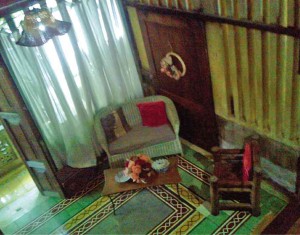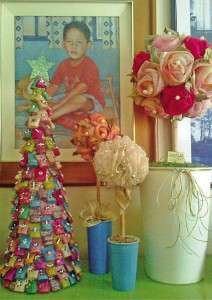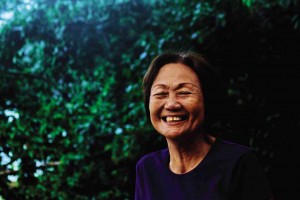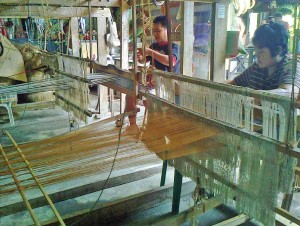
Esmerna Uyguangco-Gabutina wants to make one thing clear at the outset. Sinamay, she points out, is not a cloth. It is a way of weaving abaca in four-pedal handlooms.
We are stepping inside her house in the seaside town of Lagonglong in Misamis Oriental, which she has transformed into an airy arts-and-crafts workshop she calls Tinabu-an. The Bisaya word roughly translates as “the dynamics of the marketplace.”
Her abode is, indeed, near the town market. But with its homey quietude and the sense of artistic purpose humming in the air as the community folk buckle down to work here, this place is no public market.
It is, simply, an atelier of exquisite sinamay artwork —flowers, dolls, bags, fans, blinds, place mats, table runners, novelty covers (e.g., for blank books of handmade paper or CD/DVD holders), Christmas and all-occasion décor, and sundry fashion accessories.

“In the beginning,” says Uyguangco-Gabutina, “our first product was the sinamay ribbon.”
This was in 1998, when the town’s abaca industry teetered on the edge. Old-timers recall that swathes of land here used to be planted to abaca. This was processed into the finest and sturdiest fishnets in Northern Mindanao.
Alternatively, the abaca was fashioned into mosquito nets and clothing material that allowed the body to breathe. (It’s said that the Japanese forces invading the area during World War II went gaga over the sinamay cloth.)
Skills enhancement
“But cheap, mass-produced plastic fishnets and mosquito nets from China wiped out the industry,” rues Uyguangco-Gabutina. “Our town suffered a terrible hardship. It was then that I knew we had to innovate and move forward.”

She organized the unemployed mothers in the community into a cooperative—and, sensing that they were serious about it, the Department of Labor and Employment (DOLE) gave them seed money of P1 million.
Uyguangco-Gabutina also asked the Department of Trade and Industry (DTI) to provide training for “skills enhancement,” and the DTI sent them design consultants, including one from Canada, who taught the women new tricks on the handloom.
But most of all, Uyguangco-Gabutina’s son Patrick, an artist and the provincial administrator of Misamis Oriental for the past nine years, trailblazed with a lot of experimentation.
For instance, he showed the atelier it’s okay to mix and match the weaving materials: abaca intertwined with twigs or broomsticks, or strips of leftover cloth from someone’s tailoring shop.
And, what the heck, they could play with even the fibers, too—abaca, yes, but also rattan and romblon and whatever else is locally available.

The products they brought to the trade fairs became bestsellers.
“Our mixed-weave bags made of abaca fiber, cotton thread and retazo (fabric scraps) were handpicked as among ‘the most innovative products’ last year,” Uyguangco-Gabutina said.
At the national One Town, One Product (Otop) showcase in SM Megamall last October, Tinabu-an’s Christmas tree—bedecked with miniature sinamay bags and thingamajigs—emerged as a runner-up out of 500 contenders for innovative design.
Secondary importance

While the awards affirm that she’s on the right track, Uyguangco-Gabutina says that these are of secondary importance to her.
“What matters to me, really, is that I am happy helping my fellow women in our town. Because of Tinabu-an, they have work, they have food on their table, they can send their children to school, they have a sense of fulfillment in their lives.”
Such commitment to her hometown is her way of giving thanks for the many blessings she has enjoyed living in the town.

“My father died when I was nine months old, and my mother moved back here and raised me here by herself. I went to the Lagonglong Central Elementary School. For my high school, she sent me to Lourdes College in Cagayan de Oro City, about an hour’s ride away. I took up BS Pharmacy at the University of San Carlos in Cebu City. When I passed the board, I opened the first drugstore in Lagonglong.
“By the time I was married to Pedro Alviola Gabutina, of Cagayan de Oro, I also had a bakery beside the pharmacy. Although my husband passed away due to lung cancer, our two children—Patrick and Mae—are successful in their careers. I don’t have to worry about them.”
Instead, she looks after the women of Lagonglong who, day in, day out, continue to engage in the traditional 12-step way of making such fabulous sinamay art finds.
Tinabu-an Arts and Crafts in Lagonglong, Misamis Oriental, may be reached through mobile 0920-9124836.














































